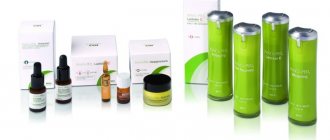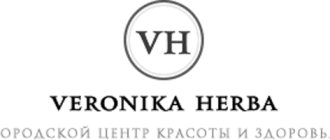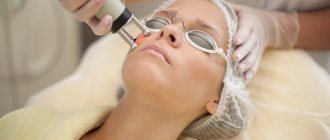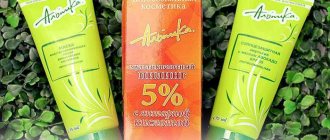Types of acids for chemical peeling
Peeling is carried out using preparations based on lactic, fruit, AHA acids, TCA acids and retinoic acids. Each acid has certain properties:
- Glycolic will reduce hyperpigmentation
- peeling with lactic acid will significantly moisturize the skin
- Using apple juice, cell metabolism will be enhanced
- lemon has whitening, antioxidant and bactericidal properties
- salicylic acid has keratolytic, keratoplastic and sebum-regulating properties
2) Prevention of post-peeling pigmentation
To prevent post-peeling hyperpigmentation, with melasma, with skin phototype III-IV, at least 2 weeks before the procedure, it is necessary to start using drugs that inhibit melanin synthesis, such as Kojicol Cream lightening cream (for prevention) or Kojicol Gel Plus lightening gel (for melasma). To prepare for peeling of skin with hyperpigmentation, in addition to the “adaptation” drug, a whitening cream (with arbutin and extracts of bearberry, mulberry, licorice, birch) and a sunscreen with SPF 15-20 are mandatory.
The condition of the skin after the procedure is directly related to the depth of the peeling effect. Post-peeling care is aimed at relieving inflammation, which is inevitable after a skin injury, accelerating healing, as well as preventing post-peeling complications, including infection due to a transient reaction of decreased skin immunity and increased transepidermal moisture loss.
Immediately after the procedure and for the next 2-3 days, it is necessary to use anti-inflammatory and moisturizing drugs in home care (Hidraloe aloe gel), then antioxidants and regenerants with a high percentage of emollients are prescribed for at least 10-15 days (Silkses moisturizing protector).
In the early post-pilin period, the use of lightening agents is not advisable due to a possible increase in skin irritation. They are usually recommended to be used simultaneously with regenerants. During the entire period of skin restoration, it is necessary to use a cream with a maximum sun protection factor, for example, Screenses SPF 50+.
| The entire range of Mediderma (Spain) >>> |
| Cleansing and preparation |
| Chemical peels Mediderma |
| Mediderma liposomal peels |
| Additives to Mediderma peels |
| Serums Mediderma |
| Mediderma masks |
| Post-peeling Mediderma |
| Professional Mediderma |
| Mesotherapy NanoMeso Mediderma |
| Mediderma ampoule preparations |
| Mediderma apparatus |
| Mediderma fillers |
| Microneedling Nanopore Stylus |
| Mediderma lines (Spain) |
| Abradermol - microdermabrasion cream |
| Argipeel – peeling based on arginine |
| Azelac Peel – azelaine peels |
| Degreasing - degreasing solution |
| Dna Recovery Peel – peeling for DNA restoration |
| Ferulac Peel – peelings and preparations based on ferulic acid |
| Fillderma – biorevitalizant and fillers |
| Hidraderm - cleansing milk |
| Ioson – gels for hardware procedures |
| Lactipeel – milk peeling |
| Mandelac – almond peelings and scrub |
| Melaspeel – Jessner peels |
| Meso Cits – serums for microneedling (mesorollers) |
| NanoMeso – mesotherapy drugs |
| Natuvalia – ampoule external preparations |
| Nomelan – phenol peels |
| Nomelan Cafeico – coffee peelings |
| Pyruvic Peel – pyruvic peels |
| Retises – retinoic peels and preparations |
| 3-Retises – new retinoic peeling |
| Rosoil – restoration and healing with rose hips |
| Salipeel – salicylic peels |
| Salipeel Lic – liposomal salicylic preparations |
| Sensyses - liposomal cleansing lotion |
| Sesglicopeel – glycolic peels |
| Ses-Retinal – retinoic peeling |
| Spa Peel – combined keratolytic peeling |
| Target Nanopeel - peeling system with liposomed active ingredients |
| TCA Peel – trichloroacetic peeling |
Superficial (light) peeling
The mildest type of chemical peeling, which removes the top layer of dead cells. The main goal is to cleanse the skin. Ideal for young skin with minor problems as a regular treatment.
Indications
:
- acne
- oily skin
- dark spots
Result
:
- improves complexion
- skin texture is evened out
- pores noticeably narrow
Recommended course: 4-6 procedures.
1) Leveling the stratum corneum, increasing skin tolerance
Regardless of the strength of the chosen peeling, the client’s skin type, his age and cosmetic defects, before the procedure it is necessary to prepare the skin for the application of a concentrated peeling preparation, increasing the adaptive reserve of the skin, making it “obedient” and susceptible to the effects of peeling. In order to increase general tolerance, awaken the regenerative powers of the skin and reduce the reaction to external irritants, cosmetic products (creams, gels, cream-gels, ampoule concentrates) with a low concentration of hydroxy acids are prescribed for home care for 2-6 weeks. To prepare skin of any type, daily use of Acglicolic classic moisturizing cream-gel is recommended. For patients over 50 years of age, as well as those who are planning Melaspeel peeling to smooth out the skin texture (for example, with deep post-acne scars), it is better to prescribe a cream with retinol (Retises 0.5% or Retises 1%) as a “preparatory” drug for peeling ).
Medium peeling
This type of chemical peel is aimed at removing the surface layer of the skin.
Indications
:
- acne scars
- stretch marks
- age spots (freckles)
- mimic and deep wrinkles
Result
:
- the process of skin restoration and renewal begins
LIX recommendations:
- Recommended course: 2-4 procedures
- Conduct during the period of least sun exposure, from September to May
- Rehabilitation period is 3-5 days
Melaspeel R | Jesner peeling
Detailed description
DESCRIPTION
Hyperpigmentation (melasma, chloasma, lentigo, dyschromia). A more effective formula than Melaspeel K and KH peels.
All Melaspeels peelings belong to the Jessner peeling family. They contain mixtures of AHA and BHA acids, have a water-alcohol base with a pH from 2.0 to 2.5.
COMPOUND
- 14% Lactic acid.
- 14% Resorcinol.
- 5% Citric acid.
- 5% Kojic acid.
- 2% Salicylic acid.
- 2% Hydroquinone.
APPLICATION
1. Cleanse the skin with milk and HIDRADERM tonic.
2. Degrease the skin with DEGREASING SOLUTION.
3. Apply SILKSES Moisturizing Protector to the corners of the eyes, lips, nose.
4. Apply peeling from 1 to 5 layers with an interval of 3 minutes. depending on the selected peeling depth:
LEVEL I - intracorneal (pink skin),
LEVEL II - intraepidermal (red skin with white areas),
LEVEL III - subepidermal (bright red skin color with white areas).
5. Sealing: Apply ACGLICOLIC CLASSIC CREAM-GEL to the last layer of peeling, sealing the peeling.
6. Apply SCREENSES CREAM SPF 50 tinted sunscreen.
Recommended course of MELASPEEL peelings: 3-6 procedures, once every 2 weeks or once a month.
The force of rubbing or increasing the amount of peeling solution increases the depth of its penetration.
The use of MELASPEEL peels causes a number of visual changes in the skin, which are associated with the depth of penetration of the peeling:
Level 1: mild erythema, pseudofrost. Skin tightness, minimal peeling for 1-2 days or no peeling.
Level 2: skin tightness and erythema, local areas with frost, burning sensation for several minutes. Moderate peeling (3-4 days).
Level 3: intense erythema, significant areas with frost, burning sensation for 15-30 minutes. Lamellar peeling (8-10 days).
The level of penetration is related to skin preparation, thickness of the stratum corneum, sensitivity, number of layers and method of application.
| The entire range of Mediderma (Spain) >>> |
| Cleansing and preparation |
| Chemical peels Mediderma |
| Mediderma liposomal peels |
| Additives to Mediderma peels |
| Serums Mediderma |
| Mediderma masks |
| Post-peeling Mediderma |
| Professional Mediderma |
| Mesotherapy NanoMeso Mediderma |
| Mediderma ampoule preparations |
| Mediderma apparatus |
| Mediderma fillers |
| Microneedling Nanopore Stylus |
| Mediderma lines (Spain) |
| Abradermol - microdermabrasion cream |
| Argipeel – peeling based on arginine |
| Azelac Peel – azelaine peels |
| Degreasing - degreasing solution |
| Dna Recovery Peel – peeling for DNA restoration |
| Ferulac Peel – peelings and preparations based on ferulic acid |
| Fillderma – biorevitalizant and fillers |
| Hidraderm - cleansing milk |
| Ioson – gels for hardware procedures |
| Lactipeel – milk peeling |
| Mandelac – almond peelings and scrub |
| Melaspeel – Jessner peels |
| Meso Cits – serums for microneedling (mesorollers) |
| NanoMeso – mesotherapy drugs |
| Natuvalia – ampoule external preparations |
| Nomelan – phenol peels |
| Nomelan Cafeico – coffee peelings |
| Pyruvic Peel – pyruvic peels |
| Retises – retinoic peels and preparations |
| 3-Retises – new retinoic peeling |
| Rosoil – restoration and healing with rose hips |
| Salipeel – salicylic peels |
| Salipeel Lic – liposomal salicylic preparations |
| Sensyses - liposomal cleansing lotion |
| Sesglicopeel – glycolic peels |
| Ses-Retinal – retinoic peeling |
| Spa Peel – combined keratolytic peeling |
| Target Nanopeel - peeling system with liposomed active ingredients |
| TCA Peel – trichloroacetic peeling |
Deep peeling
The harshest chemical peel will remove the entire epidermis. It is performed only in a hospital under local or general anesthesia.
Result
:
- smoothing scars and stretch marks
- significant reduction of deep wrinkles, removal of fine wrinkles
- getting rid of acne and post-acne
- lightening pigment spots
Contraindications
:
- hypersensitivity to peeling components
- infectious processes on the skin
- pregnancy
- neurotic conditions
- tendency to form keloids
- treatment with isotretinoin for 6 months








